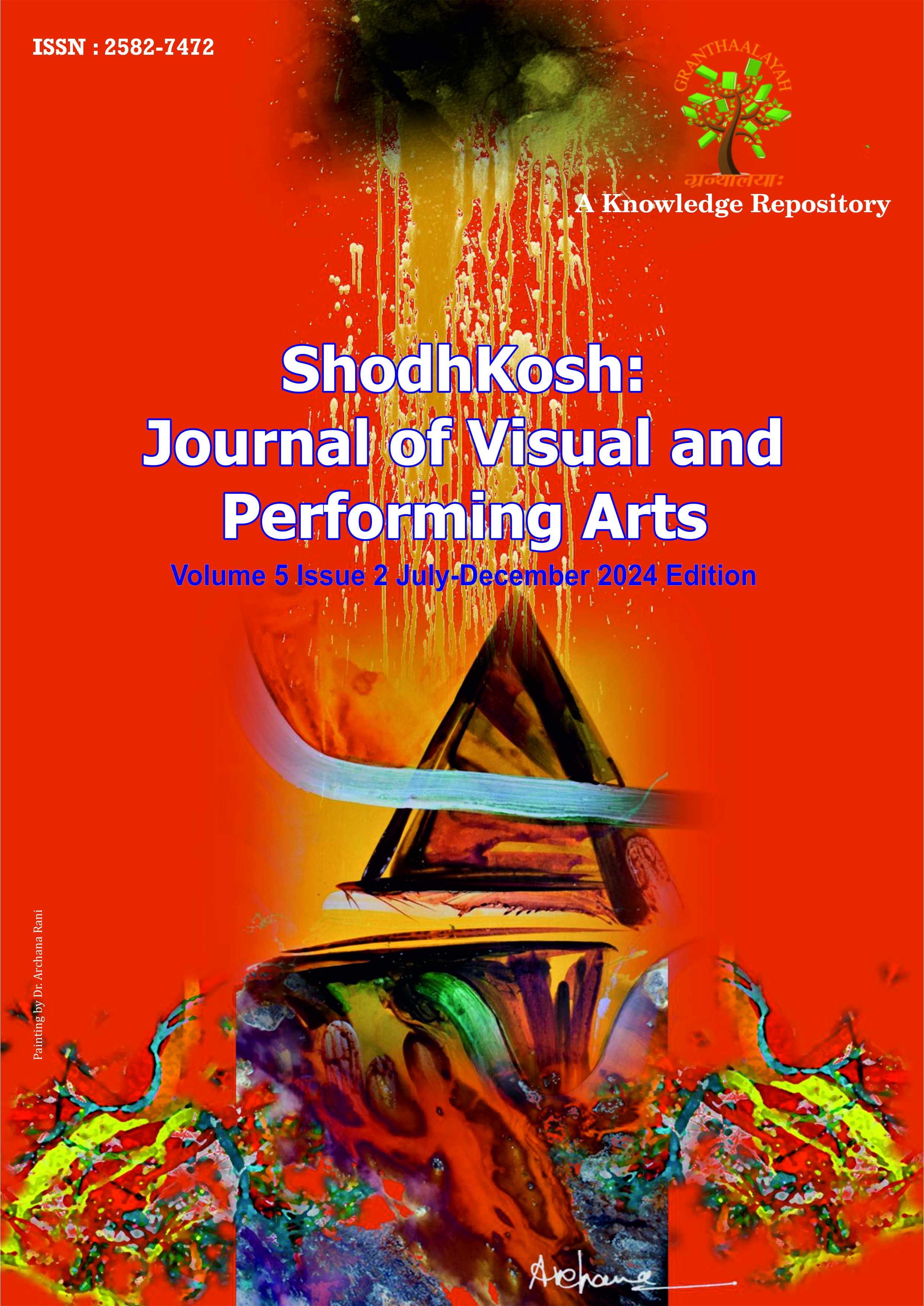THE PROBLEMS OF MIMI: UNDERSTANDING THE CONCERNS OF SEMI-URBAN WOMEN IN CONTEXT OF THE FILM MIMI
DOI:
https://doi.org/10.29121/shodhkosh.v5.i2.2024.787Keywords:
Technology, Motherhood, Mimi, Surrogacy, BollywoodAbstract [English]
This paper aims to critically analyze the film- Mimi Utekar (2021) to understand certain issues raised in its text through a popular mode of representation. The film is very recent and has become immensely successful, thus establishing its relevance from the point of research. It mainly deals with the topic of surrogacy to further highlight certain problems impending upon the day-to-day lives of common semi-urban Indian women. In the first place, this film problematizes the aspect of technology that has encroached everywhere including the realm of motherhood. Secondly, it has also dealt with the question of eastern values vs western technology through a feminine lens. Apart from this, the realistic depiction of motherhood as an independent but shackling choice also deserves some attention. The film has been chosen over other socially relevant films because of its distinct concerns pervading semi-urban Indian women who lie somewhere in the middle of Eastern values and western influence. Finally, the film is chosen over other surrogacy-based films for its practical representation of the concerns related to surrogate motherhood.
References
Abbas-Mustan. (Directors). (2001). Chori Chori Chupke Chupke. Emaar Films International.
Anonymous. (2018, May 11). How Yashoda Became Sri Krishna’s Mother Twice. Krishnabhumi.
Babu, F. P. (2023, July-December). Women Legal Literacy: A Brief Review in India. Indian Journal of Law and Human Behavior, 9(2), 85-88. http://dx.doi.org/10.21088/ijlhb.2454.7107.9223.2
Bhat, M. I. (2019, March). Women Empowerment and Technology: An Overview. In Ranjeet Kaur, (Eds.), Ethics and Society, (pp. 44-54). The Bhopal School of Social Science.
Brooks, S. (2020). US Media Representations of Transnational Indian Surrogacy: Pre 2016 Surrogacy Conditions and Connections with Global Inequality [Unpublished Dissertation]. Wright State University.
Chakraborty, V. (2017, September 23). What Makes the ‘Small Town Girl’ Bollywood’s Latest Darling. India Today.
Chaudhuri, M. (2012). Indian “Modernity” and “Tradition”: A Gender Analysis. Polish Sociological Review, 178, 281–293.
Das, S. S., & Maut., P. (2014). Commercialization of Surrogacy in India: A Critical Analysis. JCC Law Review, 5(1), 14-29.
Gulzar, M. (Director). (2002). Filhaal. Sugand Productions.
Gupta, M., & Chaturvedi, S. (2020, June 19). The Indian Ban on Commercial Surrogacy. Gender Policy Journal: A Student Publication at the Harvard Kennedy School.
Gupta, U., & Prakash, R. (2021). Women in Bollywood. Psychology and Education, 58(1), 4856-4863. http://dx.doi.org/10.17762/pae.v58i1.1646 DOI: https://doi.org/10.17762/pae.v58i1.1646
Khaitan, S. (2017). Badrinath ki Dulhaniya. Dharma Productions.
Nayer, G., & Bernardi, L. (2011). Feminist Perspectives on Motherhood and Reproduction. (Working Paper). Stockholm University Linnaeus Center on Social Policy and Family Dynamics in Europe, SPaDE.
Rai, A. L. (Director). (2011). Tanu Weds Manu. Colour Yellow Productions.
Roberts, D., & Jesudason, S. (2013). Movement Intersectionality: The Case of Race, Gender, Disability, and Genetic Technologies. Du Bois Review, 10(2), 313–328. http://dx.doi.org/10.1017/S1742058X13000210 DOI: https://doi.org/10.1017/S1742058X13000210
Saxena, P., Mishra, A., & Malik, S. (2012, October). Surrogacy: Ethical and Legal Issues. Indian Journal of Community Medicinel, 37(4), 211-213. http://dx.doi.org/10.4103/0970-0218.103466 DOI: https://doi.org/10.4103/0970-0218.103466
Schneider, N.-C. (2018). Crossmedia Flows of Documentary Images and the Transnational Communicative Figuration Surrounding Gestational Surrogacy in India. BioScope: South Asian Screen Studies, 9(2), 184-207. https://doi.org/10.1177/0974927618813477 DOI: https://doi.org/10.1177/0974927618813477
Shaji, S. (2021, July 30). Film Review Mimi: A Disappointing Contrast to Santhosh at hint e Onnam Rahasyam and Sara’s. Feminism in India.
Sharma, P., & Agarwal, S. (2020). Patriarchy and Gender Disparities in Rural India: An Analysis to Strive towards SDG-5. International Journal of Policy Sciences and Law, 1(1), 119-146.
Shetty, A. (Director). (2019). Badnaam Gali. Zee5.
Shriya. (2017, May 31). How Does Bollywood Depict Surrogacy And How is -t Harmful? Feminism in India.
Tandon, L. (Director). (1983). Doosri Dulhan. Dharampal Gupta.
Tiwari, A. I. (Director). (2017). Bareilly ki Barfi. Junglee Pictures B R Studios.
UNICEF. (2022, February). Key Considerations: Children’s Rights & Surrogacy. Child Identity Protection.
Utekar, L. (Director). (2021). Mimi [Film]. Maddock Films, Jio Studios.
Published
How to Cite
Issue
Section
License
Copyright (c) 2024 Dr. Reema Chakrabarti, Dr. Shah Al Mamun Sarkar

This work is licensed under a Creative Commons Attribution 4.0 International License.
With the licence CC-BY, authors retain the copyright, allowing anyone to download, reuse, re-print, modify, distribute, and/or copy their contribution. The work must be properly attributed to its author.
It is not necessary to ask for further permission from the author or journal board.
This journal provides immediate open access to its content on the principle that making research freely available to the public supports a greater global exchange of knowledge.




























